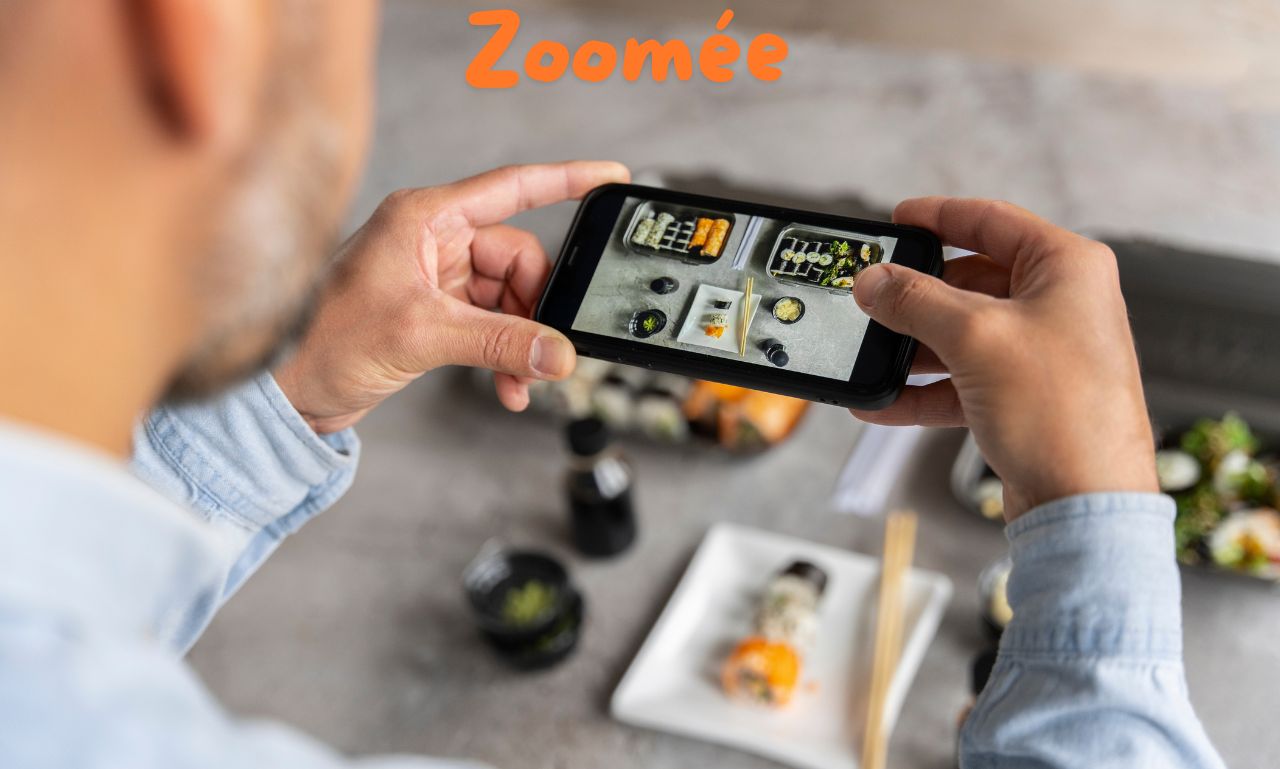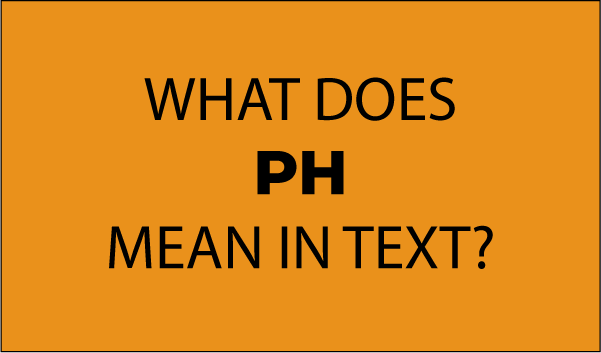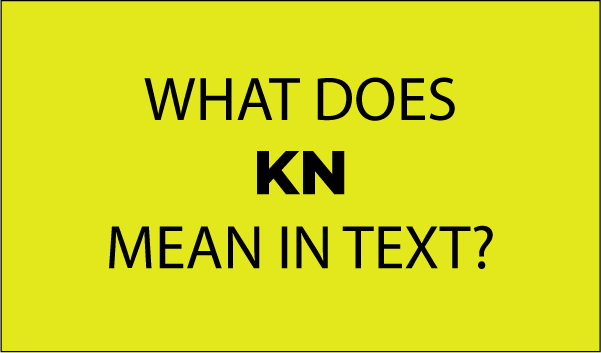Social Media
Zoomée: Revolutionizing Digital Interaction

In the rapidly evolving landscape of digital communication, the term “Zoomée” is emerging as a significant trend. A fusion of the words “Zoom” and “meet,” Zoomée encapsulates the dynamic integration of advanced video conferencing technologies with innovative features designed to enhance virtual meetings. As remote work and virtual gatherings continue to dominate the professional and social spheres, Zoomée represents the next frontier in digital interaction. This article explores the concept, benefits, applications, and future potential of Zoomée.
The Concept of Zoomée
Zoomée refers to the evolution of traditional video conferencing into a more interactive, immersive, and efficient experience. While platforms like Zoom have become household names due to the COVID-19 pandemic, Zoomée aims to take these interactions to the next level by incorporating a range of enhancements. These include augmented reality (AR), virtual reality (VR), artificial intelligence (AI), and improved user interfaces, all designed to create a seamless and engaging virtual environment.
Key Features of Zoomée
- Augmented Reality and Virtual Reality Integration: Zoomée leverages AR and VR technologies to create more immersive meeting experiences. Participants can interact with 3D models, share virtual environments, and engage in activities that feel more real and tactile, despite being conducted in a digital space.
- Artificial Intelligence Enhancements: AI plays a crucial role in Zoomée by providing features such as real-time language translation, automated note-taking, and intelligent meeting summarization. These capabilities enhance productivity and ensure that meetings are accessible to a global audience.
- Enhanced User Interface: Zoomée platforms offer a more intuitive and user-friendly interface, with customizable layouts, easy navigation, and tools that allow users to focus on the content of the meeting rather than technical issues.
- Security and Privacy: Given the increased reliance on digital communication, Zoomée prioritizes security and privacy. Advanced encryption methods, secure login procedures, and data protection protocols are standard features to ensure that meetings are safe and confidential.
Benefits of Zoomée
- Improved Collaboration: The advanced features of Zoomée foster better collaboration among team members, regardless of their physical location. Interactive tools and virtual workspaces enable real-time brainstorming, problem-solving, and decision-making.
- Increased Engagement: The immersive nature of AR and VR components in Zoomée makes meetings more engaging. Participants are less likely to experience the fatigue often associated with traditional video conferencing, leading to more productive sessions.
- Accessibility: With AI-driven language translation and transcription services, Zoomée makes meetings accessible to non-native speakers and individuals with hearing impairments, promoting inclusivity in the workplace.
- Cost-Effective: By reducing the need for travel and physical meeting spaces, Zoomée offers a cost-effective solution for organizations. This not only saves money but also reduces the environmental impact associated with business travel.
Applications of Zoomée
- Corporate Meetings: Zoom-ée is ideal for corporate meetings, offering tools that facilitate strategic planning, training sessions, and team-building exercises. The ability to share interactive presentations and collaborate on documents in real-time enhances productivity.
- Education: Educational institutions can leverage Zoom-ée to create virtual classrooms that are engaging and interactive. Features such as virtual labs, 3D educational models, and AI-driven tutoring support enhance the learning experience for students.
- Healthcare: In the healthcare sector, Zoom-ée enables telemedicine consultations, virtual medical conferences, and remote patient monitoring. These applications are particularly valuable in providing healthcare access to remote or underserved populations.
- Social Events: Beyond professional and educational uses, Zoom-ée also has applications in social events such as virtual weddings, parties, and reunions. The immersive nature of Zoom-ée makes these events feel more personal and connected, despite the physical distance.
The Future of Zoomée
As technology continues to advance, the potential of Zoom-ée is vast. Future developments could see even more sophisticated integrations of AI, AR, and VR, making virtual interactions indistinguishable from physical ones. The continued focus on user experience, security, and accessibility will drive the adoption of Zoom-ée across various sectors.
Conclusion
Zoomée is poised to revolutionize the way we interact digitally, offering a more engaging, inclusive, and efficient alternative to traditional video conferencing. By harnessing cutting-edge technologies, Zoom-ée enhances collaboration, productivity, and connectivity in an increasingly digital world. As we continue to navigate the complexities of remote work and virtual interactions, Zoom-ée stands out as a promising solution for the future.

Social Media
What does sweet disposition mean?

A sweet disposition between two people is typically regarded to be loving and friendly, durable and eternal even if for a short meeting. This is because, in psychological interactions, sweet dispositions are associated with positive emotions. The endearing nature of a personality, a tender encounter, a loving embrace, a tear, or a kiss. The feeling was one that was somewhere between desperation and a vision being spoken out loud.
Having this kind of relationship is very common nowadays, especially on social media platforms where people who are online friends sometimes don’t talk for a long time but whenever they chat it’s never like they are missing something. The song’s sweet disposition lyrics are totally inspired by this meaning.
Example
Texter 1 In the short time I have come to love some of your Sweet Disposition
Texter 2 Awww Me too
What is the history of the Sweet disposition song?
Sweet Disposition is a musical that was launched in 2009 and has gained an incredible amount of popularity since then. It has risen to prominence not just as a slogan for the independent music scene as well as a result of its inclusion in the backgrounds of blockbusters and in ads. This record-breaking track, which was co-written by Dougy Mandagi and Giovanni Silitto, has already sold more than a thousand copies.
Despite the fact that the Fiery Trap is an Australian artist, the music was initially far more successful in various nations before it was released and became famous in Melbourne. Indie rock band The Temper Trap has its roots in Victoria, where the band was formed.
Summary
| WORD: | SWEET DISPOSITION |
|---|---|
| Definition: | combination of qualities |
| Type: | Noun |
What is the effect of a Sweet disposition?
The song’s title piques one’s interest, making one wonder what the track is really concerning. This melody’s theme, in contrast to the titles of the majority of famous compositions that pander to mainstream culture, makes one think of a kind individual.
It is possible that this individual is somebody who, by their own personality, is considerate and kind. The character of the subject of the track is reflected in the choice of the phrase that serves as the tune’s title.
It provides a basis for understanding the individual’s mentality. It is a reference to a trait that is highly regarded among many individuals. Individuals who have pleasant personalities are lovely to be around, and others look forward to the time they get to spend with them. The name evokes feelings of warmth and sympathy across the reader. This can be considered as the disposition of song meaning as well as the effect of the lyrics on different aspects of life related to social media.
More words that are similar in meaning:
What was the Sweet disposition as a trend?
Many users of social media were very grateful for making online friends though they would never meet them, people understood the lyrics of this song and used it as meaning in their life. This is basically the sweet disposition in Tagalog meaning instead of as a song.
Strangers used to share the lyrics anonymously with each other and expect a hand of friendship, this is one of the major trends that was carried. Many people used the sweet disposition synonyms creating a cover song for themselves being inspired by the original copy.
Hence this is how the disposition song meaning and also in terms of social media interlinks and creates opportunities for friendships.
Social Media
What does TBH mean on Instagram?

Many people ask about tbh meaning on Instagram story It’s clear what Tbh stands for To Be Honest. tbh, for example, may suggest that somebody has commented on your post, “tbh, you’re stunning,” and you’d want to respond. However, the connotation of “tbh” hasn’t completely altered; it now portrays people on social media in a more favorable light. There are several ways to apply “tbh” relying on who is using it and how it’s used.
Examples:
John: TBH I don’t like mark he annoys me too much
Marry: I agree He is a bit annoying but not unlikable.
What does TBH mean for a girl?
Girls are always very obsessed with their personality and they always try to maintain their standard up to the society and trends. Girls ask more for a tbh than a boy from different people and try to adjust themselves like that and get to know what others think about her.
What does TBH mean for a guy?
Boys are very less concerned about their personality and usually don’t care what other people think about them. They would only ask for a tbh from some of their close friends and be done.
Summary
| WORD: | TBH |
|---|---|
| Definition: | To Be Honest |
| Type: | Abbreviation |
What does it stand for?
TBH stands for “TO BE HONEST”, this term means what the person thinks about that thing honestly. Nowadays people are very curious about knowing their first impression from others. On Instagram stories, a lot of people are curious about the meaning of “tbh.” Tbh means “To Be Honest.” Authenticity. Someone may have posted on your article with “tbh, you’re gorgeous,” and you’d want to react to it. Although the meaning of “tbh” hasn’t totally changed, it has been interpreted in a more positive way by people on social media. It is possible to use “tbh” in a variety of ways depending on who is using it and the context in which it is used.
People put a tbh pic on Instagram and share what they think about that thing whether it’s a person or a product so that everyone can know that thing.
It means “To Be Honest,” and it’s used by users of the social networking app to convey their thoughts openly. Either a post or a person may be the subject of this statement. In addition, it may be used to express a shift in perspective during a discussion. Positive and negative ideas on a certain object may both be included under the umbrella of this umbrella word. TBH, not tbh or Tbh, should be expressed in all capital letters. In order to guarantee that a user’s perspective is expressed with total honesty, TBH is employed.
More words that are similar in meaning:
What does dm me for tbh mean?
To DM someone means to text or message someone, it can be related to anything. DM stands for Drop a Message. Dropping a message related to anything, “DM” is often used to denote “Direct Message” in the virtual world. Only the intended receiver and the sender may view the contents of a personal message.
People usually ask for a TBH, these are usually the people with low followers so this way they can gain followers if people are interested in them, asking give me a tbh meaning in instagram has become very common today.
This terminology is often used, particularly on social media platforms like Instagram. TBH is mostly used by teenagers in their postings, remarks, and tales. Instagram tales like ‘Respond for a TBH’ or ‘Send love for TBH’ or remarks like ‘TBH coz I’m bored’ are common. Asked for TBH, many respond with “You’re hilarious” or “I have a crush on you” when asked.
Why do people ask for TBH?
It means “To Be Honest,” and it has been used by users of the social networking app to convey their thoughts openly. A post or a person may be the subject of this statement. Of addition, it may be used to express a shift in perspective during a discussion. Instagram “You’re kind” or “you’re hilarious,” according to Sammy, a high school student, who tells Tech Insider that her peers often add “you should speak more” following the word “tbh.”
To be honest, is the abbreviation for the phrase “to be honest” that may be found on the internet. A person who uses this slang when conversing with another person is implying that they are telling the truth. The sender’s message might also demonstrate their honesty by using this expression. TBH is a popular abbreviation on Snapchat and is used the most often.
Where does TBH come from?
What’s the story behind TBH? Originally coined in 1991, the phrase “to be honest” (abbreviated TBH) gained popularity on the internet in the late 2000s. The first is similar to the practice known as “tbh,” in which a person rewards a peer for liking their social media post with a kind word. tbh, I don’t know (also TBF) abbreviation for the sake of fairness: utilised on social media and in text messages after you’ve taken into account all of the factors that might affect a situation: To be honest, I’ve never had any issues with her.
Also that TBF means to be fair in order to be honest: The term is often used on social media and in text messages when you’ve taken into account all of the factors that might affect a situation: Honestly, she’s never done anything to harm me.
Tbh, however, has acquired a new connotation among young people on social media platforms like Instagram and Tumblr. They use terms like “like for a tbh” or “reply to my image for a tbh” to describe their actions. That’s more of a compliment to pay to each other, rather than an insult. Prior to social media, the abbreviation “tbh” signified “to be honest” as something to say when you were attempting to be truthful or open about an unpleasant issue. When people put up a story about giving me a tbh meaning on Instagram they just want to know about their impression through others.
Social Media
How an Unsuccessful Draft Pick Impacts a Team’s Future

Draft picks are the heartbeat of a sports team’s future. Like pieces on a chessboard, these selections can either propel a team to greatness or leave them struggling to stay afloat. In this fast-paced world of professional sports, the stakes are high, and every draft pick counts. Let’s delve into how an unsuccessful draft pick can send shockwaves through a team’s path to success.
The impact of a successful draft pick on a team’s future
Draft picks are the lifeblood of any sports team. They represent hope, potential, and the promise of a brighter future. A successful draft pick can completely transform a team’s fortunes, injecting talent, energy, and passion into the lineup.
When a team hits gold with a top draft pick, it can set them up for years of success. The player becomes not just an athlete but an icon for the franchise – someone fans rally behind and opponents fear facing on the field.
Take Tom Brady as an example. Drafted in the sixth round by the New England Patriots in 2000, he went on to become one of the greatest quarterbacks in NFL history. His impact on the Patriots’ future was monumental – leading them to multiple Super Bowl victories and cementing their place among football’s elite teams.
A successful draft pick is like striking gold – it elevates a team to new heights and cements their legacy in sports history forever.
Case study: The success of Tom Brady for the New England Patriots
When discussing successful draft picks in the NFL, one name that immediately comes to mind is Tom Brady. Drafted by the New England Patriots in the sixth round of the 2000 NFL Draft, Brady’s journey from being a relatively unknown player to becoming one of the greatest quarterbacks in history is nothing short of remarkable.
Despite not being a high-profile pick, Brady seized every opportunity he got and worked tirelessly to prove his worth. His dedication, work ethic, and leadership skills helped him become a six-time Super Bowl champion and earn numerous accolades throughout his career.
Brady’s success with the Patriots not only elevated the team but also set a standard for excellence in the league. His ability to perform under pressure and consistently deliver results has solidified his legacy as an all-time great in football history.
The consequences of an unsuccessful draft pick on a team’s future
Draft picks are the lifeblood of a sports team, shaping its future for years to come. A single unsuccessful draft pick can have ripple effects that impact a team’s trajectory in significant ways. When a team invests resources and hopes in a player who doesn’t pan out as expected, it can set them back both on the field and off.
On-field performance suffers as the anticipated contribution from the failed pick is not realized, leading to gaps in talent and strategy. The morale of the team may also be affected as disappointment sets in among players, coaches, and fans alike.
Moreover, an unsuccessful draft pick can have financial implications for a franchise. Wasted resources on signing bonuses, salaries, and development costs could have been allocated more effectively elsewhere. This misstep could hinder future roster moves or investments that would benefit the overall competitiveness of the team.
In essence, an unsuccessful draft pick is not just about missing out on talent; it’s about missing opportunities for growth and success that can echo through seasons to come.
Case study: The Cleveland Browns’ struggles with draft picks
The Cleveland Browns have had their fair share of struggles when it comes to draft picks. Despite having numerous opportunities to select top talent, they have often failed to capitalize on these choices. This has resulted in a lack of consistent success for the team over the years.
One notable example is their selection of Johnny Manziel as the 22nd overall pick in the 2014 NFL Draft. Hyped as a potential franchise quarterback, Manziel’s off-field issues and underwhelming performance on the field quickly derailed any hopes of him leading the team to victory.
Additionally, players like Justin Gilbert and Corey Coleman were also high draft picks that did not pan out as expected for the Browns. These unsuccessful selections have hindered the team’s ability to build a competitive roster and make significant strides in the league.
Moving forward, it is crucial for the Cleveland Browns to learn from past mistakes and implement better strategies when it comes to drafting players. Making informed decisions based on player performance, character assessments, and team needs will be essential in avoiding further setbacks in future drafts.
Strategies for teams to avoid unsuccessful draft picks
When it comes to avoiding unsuccessful draft picks, teams need to prioritize thorough scouting and player evaluation. Conducting deep research on potential prospects can help uncover any red flags or concerns that might impact their performance at the professional level.
Furthermore, establishing a strong communication system between coaches, scouts, and front office personnel is crucial. Ensuring that everyone is on the same page regarding the team’s needs and goals can lead to more informed decision-making during the drafting process.
Additionally, investing in data analytics and advanced statistics can provide valuable insights into a player’s potential success in the league. Utilizing technology and modern tools can help teams make data-driven decisions rather than relying solely on gut feelings or intuition.
Conclusion
In the unpredictable world of sports, successful draft picks can propel a team to glory, while unsuccessful ones can set them back for years. The impact of a single player chosen during the draft process can shape the trajectory of a franchise. Teams like the New England Patriots have benefited tremendously from successful picks like Tom Brady, who not only transformed their on-field performance but also became an icon for the organization.
On the flip side, teams like the Cleveland Browns serve as cautionary tales of how repeated unsuccessful draft picks can hinder progress and leave fans yearning for better days. Making informed decisions during the drafting process is crucial for sustained success in professional sports.
By learning from past mistakes and implementing strategies to avoid unsuccessful draft picks, teams can position themselves for long-term success. Scouting talented players thoroughly, analyzing data effectively, and considering team needs are all essential factors to consider when making draft selections.
Understanding how an unsuccessful draft pick impacts a team’s future underscores the importance of meticulous planning and strategic decision-making in building a competitive roster. In such a high-stakes environment where every choice matters, teams must strive to make wise choices during each draft cycle to secure their place among sports’ elite franchises.
-

 Business2 months ago
Business2 months agoWhat does Incumbent mean in business?
-

 Text2 months ago
Text2 months agoPH
-

 Text2 months ago
Text2 months agoWhat does smh mean in text?
-

 Text2 months ago
Text2 months agoKN
-

 News1 month ago
News1 month agoDiscover MyLawyer360: Your One-Stop Legal Assistance Hub
-

 Business1 month ago
Business1 month agoLessInvest.com Crypto: Your Gateway to Smarter Investments
-

 sports1 month ago
sports1 month agoThe Versatile Talent of ben foster: A Deep Dive into His Career
-

 Health1 month ago
Health1 month agoThe Comprehensive Guide to Mega-Personal.net Health Archives